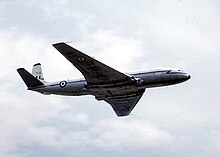 The study of fatigue behavior of mechanical structures has today become necessary in all fields because of the increasing need for lightweight, high-performance, yet secure in their use: sports cars and motorcycles and bicycles are just examples of fields in it is important to study the fatigue behavior.
The study of fatigue behavior of mechanical structures has today become necessary in all fields because of the increasing need for lightweight, high-performance, yet secure in their use: sports cars and motorcycles and bicycles are just examples of fields in it is important to study the fatigue behavior.- Infinite life: that the structure (typically valid for steel) will never reach the stress limits determining a fatigue failure
- Safe life: the level of stress achieved by the structure is such as to have a limited lifetime, but in its operational life is subjected to a number of cycles of fatigue significantly lower than those tolerable
- Fail safe: it is a structure designed and manufactured in such a way that the propagation of any crack will occur within a limited area or in any case it stops before the collapse of the structure
- Damage tolarance: the structure in this case is designed to support defects or breakages in a safe, until such breakage are eliminated by repairing or replacing the part.
The veracity of these design criteria be validated by experimental activity.
Perform good fatigue testing is not trivial and requires experience to be able to plan correctly cycles of load to be applied to the structures and how they are applied. The structure during test must be in fact subjected to the same loads to which it is subjected in its working life, trying to minimize the number of actuators to be able to reduce the costs of testing. It is therefore important to check that simplified loads can achieve the same distribution of stress that structure have in life. Strain gauge sensors, which measure the deformation of the structures, placed suitably are used to verify the state of stress during the fatigue test, in order to check on the one hand that the state of initial effort is the desired one from the other hand to verify the integrity of structure during the test. There are also sensors for crack propagation, which let you track the length of crack propagation. Vicoter for its expertise in the field of fatigue testing is able to provide a complete service from the design of the test rig to constant surveillance of tests to verify the occurrence of cracks and their propagation is by visual inspection both survey methods do not destructive as dye penetrant, X-rays and ultrasound.


